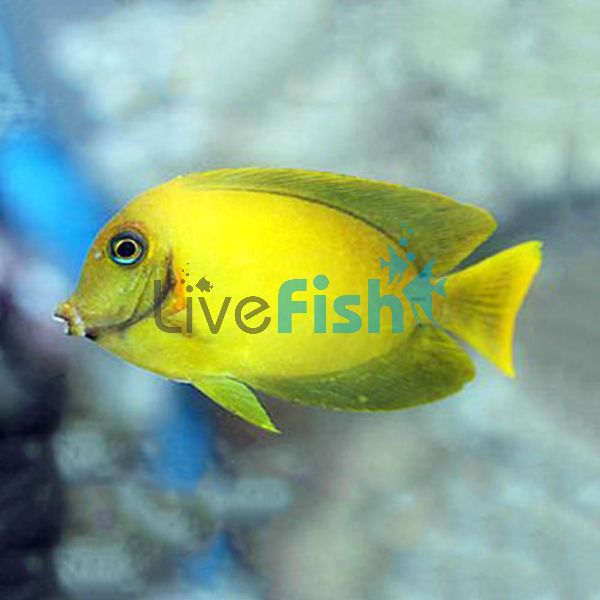Tang Yellow Mimic - Small
This interesting species of tang is known for taking on the form of nearby fish while it is a juvenile to protect itself. They are one of the easier species of tang to care for as they don't get as large as others but still remain just as beautiful.
The Mimic Tang has a disc-shaped body and the adults are coloured a dark yellow-brown or purplish colour with orange patches. Some have dark yellow bands running down their bodies and encircling the eye. As juveniles, they will mimic the shading of various types of Pygmy Angelfish. This is most likely for protection until their scalpel-like spines become mature.
No sexual differences have been noted for the Mimic Tang and no success has been had when attempting to breed them in captivity yet. Some spawning has been reported in public aquariums but it has never been possible to raise the young.
As mentioned before the adults of this species have sharp spines so you should take extra care when handling them in any way.
This species is found all over the Indo-Pacific region from Japan, Indonesia and Seychelles all the way over to Tuamotu. They are normally found on their own around reef slopes and shallow lagoons that are rich in dense coral and have been spotted down at depths of up to 60 metres.
Tank Recommendations for the Yellow Mimic Tang
Although not a large species of Tang they still need lots of wide open swimming space so a tank size of at least 290 litres is required. Create plenty of nooks and crevices with coral and rock for them to make themselves feel safe in as well as wedging into at night to sleep. Tangs love well-oxygenated water so make sure to provide them with at least one area in the tank that has strong water movement. These fish will do well in both a fish-only and reef aquarium environment. They will graze on naturally occurring algae so a good amount of live rock would be a great idea.
Suitable Tank Buddies
These fish are semi-aggressive and can sometimes be territorial especially when housed with other Tangs that look too similar. They can hold their own with other larger, more aggressive tank buddies.
Usually Compatible
Tangs will do well with both large and small species of Angelfish. Clownfish, Damselfish and Eels would also be excellent options. Other great choices include Goatfish, Pufferfish and Parrotfish. Groupers, Filefish and Snappers will get along just fine with this species of Tang as well.
Sometime Compatible
Batfish and Butterflyfish can be problematic sometimes so keep an eye on them. Other species that should only be considered carefully are Rays and Triggerfish. Other species of Tang can sometimes be kept together with caution. Make sure to add them to the tank at the same time and that they aren't too similar looking.
Rarely Compatible
Shy, docile species such as Pipefish and Seahorses will be too scared by the Tang's boisterous nature. Sharks will see the Tang as food and more than likely prey upon it, so avoid them at all costs.
Feeding your Yellow Mimic Tang
The Mimic Tang is primarily a herbivore and in the wild will spend its time grazing on algae located on rocks and coral bases. In the aquarium, you should provide them with a small amount of meaty foods such as brine or mysis shrimp but the majority of their diet will come from vegetables. Frozen preparations containing algae or spirulina would be ideal. Pieces of nori seaweed can be clipped to rocks or tank sides to simulate grazing areas too. Vitamin C supplements have been shown to help prevent a variety of diseases. Frozen broccoli and spinach has been reported as successful by some aquarium owners.
| Scientific Name | Acanthurus pyroferus |
|---|---|
| Care Level | Moderate |
| Common Names | The Mimic Tang is also known as the Chocolate Tang and the Mimic Surgeonfish. |
| Diet | Omnivore |
| Fish Family | Acanthuridae |
| Lifespan (years) | 10 |
| Max. Length (cm) | 26 |
| Min. Tank Volume (l) | 1098 |
| Origin | Indo-Pacific |
| Reef Safe | Yes |
| Sociability | Semi-aggressive |
| Venomous | No |
| Water Conditions | 25.5-27.8° C (78-82° F), dKH 8-12, pH 8.1-8.4, sg 1.020-1.025 |




